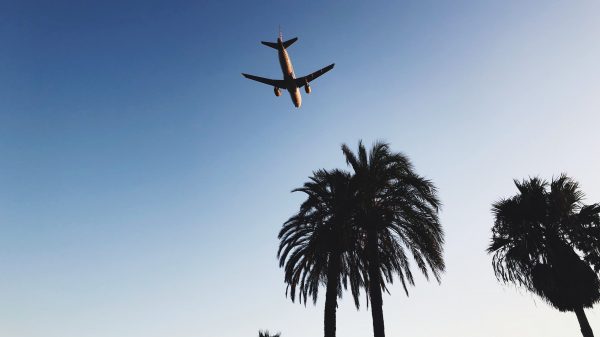Color codes
What about color codes again? A travel advice has a map with a color: green, yellow, orange or red. The color code gives an idea of the security risks, the health risks and the corona measures in a country or area.
With the green light you can travel safely to the country. When you return to the Netherlands, you do not have to show a negative test result and you do not have to be in quarantine. Does a country have a yellow code? Then travel is possible, but it does entail risks. However, you do not need a negative test result to re-enter the Netherlands and you do not have to quarantine. It is possible that the country in question does ask for a negative test result before you are welcome.
Orange means: only travel to the country or area if it is absolutely necessary. When you return to the Netherlands, you need a negative test result and you must be quarantined. Are you planning to visit a country with code red? The government absolutely advises against that.
Yellow countries
A number of countries have now been labeled as safe by the government, but that does not automatically mean that these countries are also waiting for Dutch tourists. You also need a negative test result for many (read: almost all) yellow countries and you sometimes have to quarantine on arrival.
Popular countries such as France, Spain (apart from the Canary Islands and the Balearic Islands) and Belgium still have code orange. The government therefore recommends visiting these countries only if necessary.
Portugal
As a traveler from the Netherlands, you no longer have to go into (home) quarantine for fourteen days upon arrival on the mainland in Portugal. There is still a PCR test obligation for air travel from the Netherlands to Portugal. There is no testing obligation from Portugal to the Netherlands, including the Azores and Madeira island groups. You do need a negative test result on arrival for both islands, but you do not have to quarantine.
Malta
As a Dutch tourist in Malta you must show a negative test result. Travelers who are unable to show such a negative test result are required to be tested on arrival in Malta, or must be quarantined at home for fourteen days. You do not have to show a negative test from Malta back to the Netherlands,
Italy
Travelers who travel to Italy from the Netherlands must show a negative test result before arriving in Italy. The test must not be older than 48 hours on arrival. This also applies to children from the age of two. Some travelers are exempt from the test obligation, such as business people, border workers or travelers in transit (within 36 hours).
Norway
Although our government labels Norway as safe, we are not yet welcome as Dutch tourists. Since the discovery of infections of the British variant of the corona virus, the country has closed its borders to travelers. There are some exceptions.
Luxembourg
After a stay in Luxembourg, you do not have to submit a negative test when you return to the Netherlands from 10 June and you are not in (home) quarantine. There is a test obligation for persons from the age of six for air travel from the Netherlands to Luxembourg. This test should be no more than 72 hours.
Poland
People traveling to Poland must be quarantined at home for ten days, unless you are vaccinated or can provide a negative test. A test is not necessary upon return to the Netherlands.
Czech Republic
The Czech Republic uses a traffic light system to determine whether travelers from another EU country are allowed to enter. Tourist trips are only allowed from countries on the green list. Applies to countries in the orange and (dark) red categories limitations. The Netherlands is currently on the red list (high risk).
Slovakia
Traveling to Slovakia? Then you must be placed in (home) quarantine on arrival if you have not been (fully) vaccinated or cannot provide proof that you have had the coronavirus. You can be tested on the first day of arrival. Is the test result negative? Then you can end the quarantine immediately.
Finland
In Finland, even though the country is marked ‘yellow’, Dutch tourists are not yet welcome. Only necessary visits are allowed, but even then a strict home quarantine applies for a period of fourteen days. You are strongly advised to be tested before departure. If you are unable to show a negative test result upon arrival, you must be tested immediately upon arrival at the airport.
You can make an appointment in advance on the website of the Finnish government for free testing upon arrival in Finland. You can shorten your home quarantine by taking a second test at the earliest 72 hours after the first test. If both are negative, you may end the home quarantine.
Hungary
Hungary is also not yet open to the Dutch. Only residents of Hungary are allowed to enter the country. After returning to Hungary, they must be quarantined for ten days or have a total of two negative tests.
Iceland
You must register digitally on the Icelandic government site within three days before departure. A negative test is also required before departure from the Netherlands. That test result is not necessary for people who have been fully vaccinated or can show that they have been infected.
In addition, everyone must take a new test on arrival and immediately quarantine until the result of that test is known. After day five you can take another test.
Ireland
Although traveling to Ireland is possible again, there are a number of factors to take into account. For example, all travelers from the age of six who travel to Ireland by plane or ferry are required to show a negative PCR test result of no more than 72 hours before arriving in Ireland. In addition, Dutch travelers must be in (home) quarantine for a period of fourteen days on arrival in Ireland.
You can shorten this quarantine period if you receive written confirmation of a negative PCR result five days after arriving in Ireland.
Read also
Are you insured if you contract corona while on holiday?
The Netherlands Antilles
Aruba
Before you travel to Aruba, you must complete a health declaration online. You also have to fill out an immigration card and a PCR test is mandatory for travelers aged 15 and over. In addition, additional insurance, which covers COVID-related costs during your stay in Aruba, is mandatory.
Bonaire
As a Dutch traveler (aged thirteen years or older), you must be able to show a negative test of a maximum of 24 hours old upon departure to Bonaire. Those who cannot show a negative test result on arrival will be quarantined at a designated location for ten days at their own expense. You must also complete a health declaration, preferably 48 hours before departure.
Curaçao
For a holiday on Curaçao it is also necessary to complete a health declaration and immigration card via the website of the government of the island. Travelers from the age of seven must present a negative PCR test on arrival, which has been taken no later than 72 hours before departure. 48 hours before departure to the island, tourists must make an appointment for an antigen test on the third day after arrival on Curaçao.
Proof of the appointment for an antigen test, together with the test result of the negative PCR test and the ‘Public Health Passenger Locator Card’ must be presented in hardcopy upon arrival. It is also mandatory to have travel insurance.
Islands in Europe
Spanish Islands
Although mainland Spain is still orange, the Canary Islands (including Gran Canaria, Tenerife and Lanzarote) and the Balearic Islands (including Mallorca, Menorca and Ibiza) have been labeled safe by the Dutch government. After a holiday on one of these islands, you do not have to quarantine on your return and no test is necessary. You do need a negative PCR test to enter the country.
Greek Isles
Mainland Greece is also still a risk area according to the Netherlands. However, a number of islands are safe enough to travel to. For example, after a stay on the North Aegean islands (including Lesbos and Samos) and the Ionian islands (including Corfu) in the Netherlands, you do not have to go into home quarantine or be required to be tested.
Crete is a separate region and is not part of these islands. The same rules apply to Crete as to the rest of Greece, as do the South Aegean countries (including Mykonos, Kos and Santorini).
Upon arrival in Greece you must show a negative PCR test. Persons who have been fully vaccinated may provide proof of their vaccination.
What can you do during your holiday?
Similar rules apply in most European countries as in the Netherlands. For example, mouth caps are mandatory in public buildings and you have to keep one and a half meters away. A number of countries apply additional measures.
For example, in Spain it is also mandatory to wear a mouth cap in the open air. In Greece there is a curfew from 00:30 to 05:00. In Portugal they don’t keep a distance of one and a half meters, but two meters. If it is not possible to keep this distance, it is also mandatory to wear a mouth mask in the open air.
The catering industry is open in all countries mentioned. Grab a terrace during your ‘coronaproof’ holiday is definitely in it. The rules are slightly different everywhere and can change at any time. So always check in advance on the site of the local government what is expected of you as a tourist, and what is not.
Read also
It’s allowed again, so we’re going again: number of bookings holidays is rising after relaxation
–

